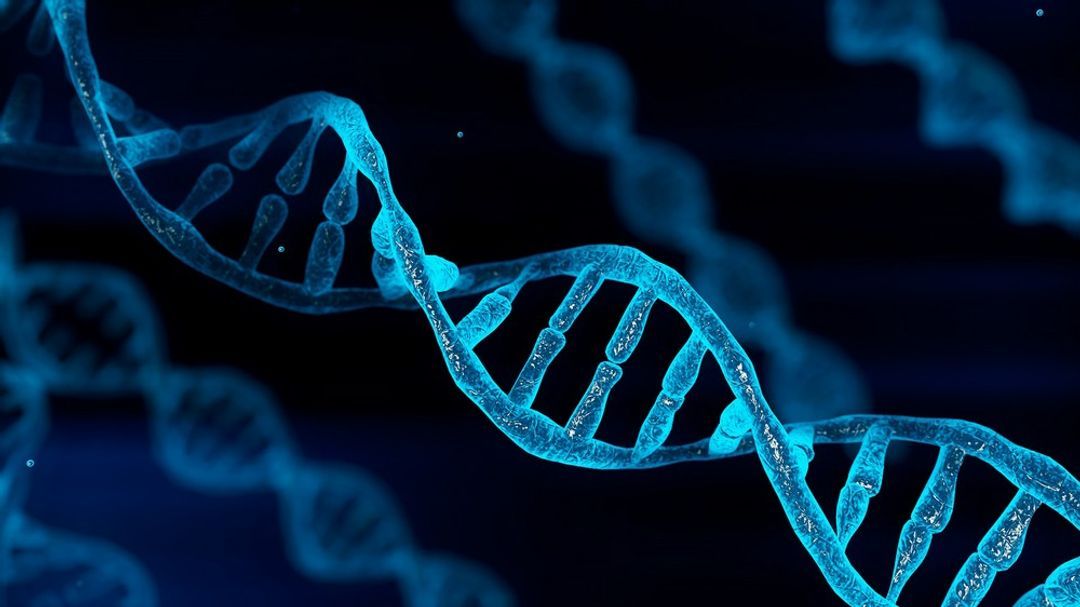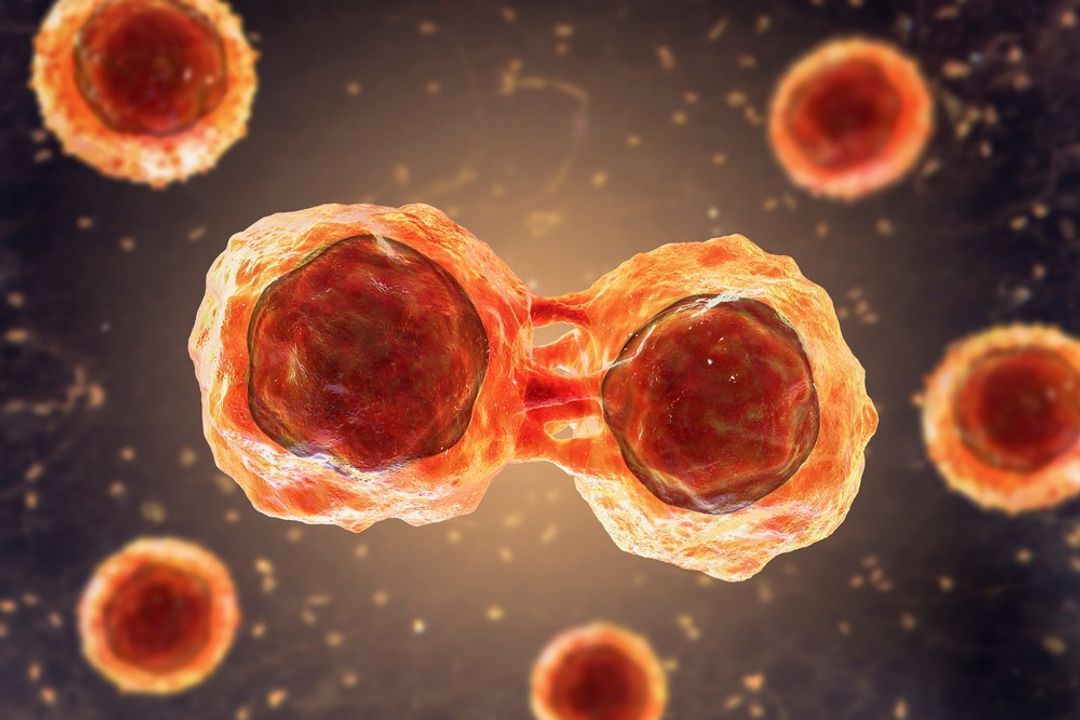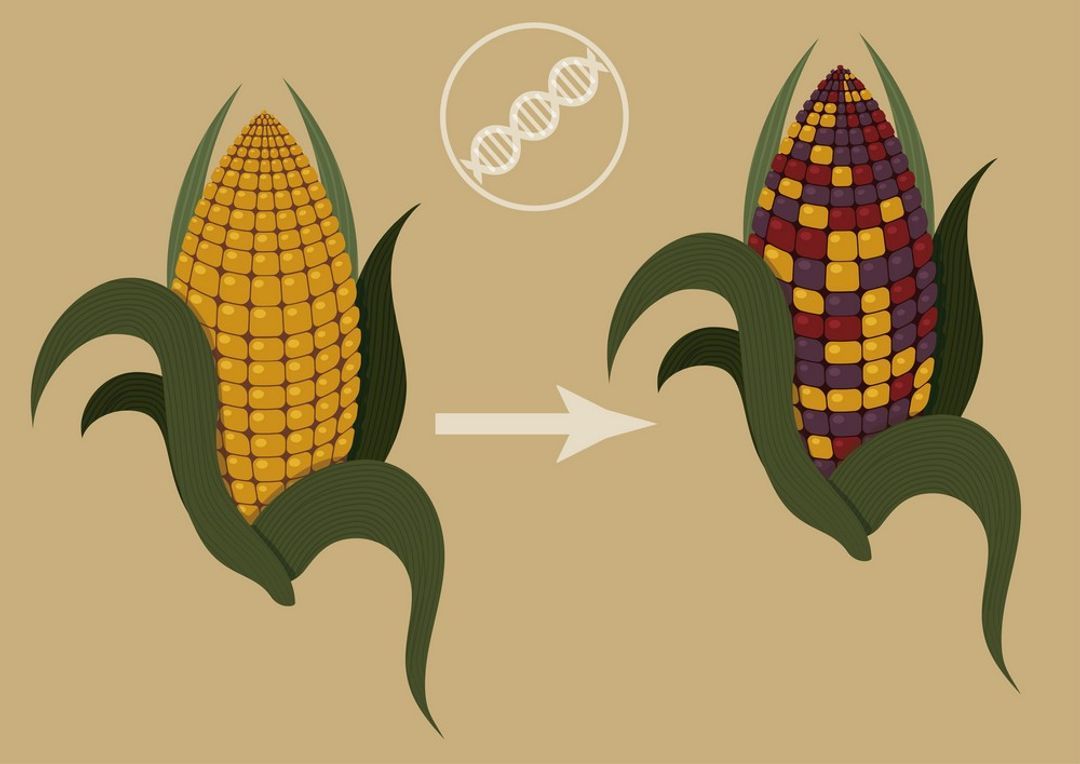Optimal Diet for Health and Longevity: Uncovering the Fountain of Youth
Want to know the healthiest diet for longevity? What is the best diet for overall health? Click here to learn how to live longer and healthier.
Ageing has long been a subject of fascination and inquiry by scientists, philosophers and thinkers throughout history. Despite extensive research and technological advancements, the exact mechanisms underlying this complex phenomenon remain a mystery. However, in recent years, experts have made significant strides in understanding this process, identifying 12 distinct hallmarks that characterise ageing.
These hallmarks provide a comprehensive framework for understanding the biological and physiological changes as we age. Each one represents a different aspect, and together, they paint a detailed picture of how our bodies degrade over time.
This article sheds light on the intricate mechanisms that govern our journey through time. We will explore the latest research and scientific findings, providing a thorough understanding of each hallmark and its role in the ageing process. We will also discuss the potential implications of these findings for longevity and healthspan, offering insights into how we might slow or even reverse some aspects of ageing.
The hallmarks of ageing theory was born out of a need for a systematic framework to understand the complex processes underlying ageing. Prior to its introduction, ageing was viewed as a multifaceted concept influenced by various factors, but there was no unified theory that could explain how these elements interacted to drive ageing.
The original paper, published in 2013 by López-Otín et al., systematised the ideas underlying ageing and quickly became a common discussion topic in the rejuvenation world. It was frequently cited in research papers, indicating its significant impact on the field [1].

This document proposed nine distinct categories, or ‘hallmarks’, that characterised ageing across different organisms. Over the past decade, this theory has been refined and expanded, with the latest iteration identifying 12 hallmarks [2]. This expansion reflects the rapid advancements in our understanding of the ageing process and the recognition of new interrelated mechanisms.
The 12 hallmarks of ageing include the original nine:
Plus three new ones:
Each of the 12 hallmarks must meet three criteria:
Genomic instability refers to the accumulation of damage to DNA over time. This deterioration can lead to mutations and chromosomal abnormalities, disrupting normal cellular function and contributing to ageing and age-related diseases. The build-up of DNA damage can occur due to various factors, including exposure to harmful environmental agents, errors in DNA replication and the inherent instability of certain DNA sequences.
Scientists are actively exploring ways to improve DNA repair and reduce genomic instability. One study looked at the effects of krill oil, packed with beneficial substances like omega-3 fatty acids, choline and astaxanthin, on a model animal called C. elegans. Results showed that krill oil could protect certain nerve cells (dopaminergic neurons) from damage associated with ageing and also reduce the clumping of a protein called alpha-synuclein, which is often seen in age-related diseases [3].
Telomeres, the protective caps at the ends of our chromosomes, play a crucial role in cellular ageing. They shorten with each cell division, and when they become critically short, cells enter a state of senescence or cell death. This process, known as telomere attrition, is associated with ageing and a host of related diseases.
Research has shown that individuals with shorter telomeres have a higher risk of cardiovascular disease, certain types of cancer and even early death [4]. Testing is ongoing to develop interventions that can extend the length of telomeres or slow their attrition.
For instance, lifestyle modifications, such as regular exercise, a healthy diet and stress management, have been shown to slow the rate of telomere shortening. Additionally, certain antioxidants and anti-inflammatory drugs are being investigated for their potential to protect telomeres from damage [5].
 Proteostasis refers to the balance of protein synthesis, folding and degradation in the cell, which is crucial for maintaining its function and health. However, with ageing, this balance is disrupted, leading to the accumulation of misfolded or damaged proteins, known as loss of proteostasis.
Proteostasis refers to the balance of protein synthesis, folding and degradation in the cell, which is crucial for maintaining its function and health. However, with ageing, this balance is disrupted, leading to the accumulation of misfolded or damaged proteins, known as loss of proteostasis.
Protein aggregates, which are clusters of misfolded proteins, are a common feature of neurodegenerative diseases such as Alzheimer's and Parkinson's. Interestingly, a study conducted on the C. elegans worm found that the essential amino acid, L-threonine, could help improve their health and lifespan by reducing loss of proteostasis and preventing a specific type of cell death known as ferroptosis.
Our bodies have a built-in system for responding to the nutrients we take in from food, which helps regulate many important processes, including how our cells grow and divide, use and store energy, and respond to stress.
As we age, nutrient sensing can become deregulated, leading to imbalances in energy metabolism, contributing to conditions like obesity and diabetes. It can also affect cell growth and division, as well as immune response and inflammatory processes, which can lead to problems like heart disease, cancer and Alzheimer's.
Improving nutrient sensing pathways in the body can be achieved through various methods, including caloric restriction, intermittent fasting, exercise, a balanced diet, certain medications and supplements, and a healthy body weight.
 Mitochondria are the powerhouses of our cells, responsible for producing the energy they need to function. However, as we age, their efficiency can decline, leading to what is known as mitochondrial dysfunction.
Mitochondria are the powerhouses of our cells, responsible for producing the energy they need to function. However, as we age, their efficiency can decline, leading to what is known as mitochondrial dysfunction.
This process can cause a range of problems, including increased production of reactive oxygen species (ROS), which can cause oxidative stress and damage to cells. It can also impair the cell's energy metabolism, leading to decreased energy availability, as well as impaired nutrient sensing and genomic damage, two hallmarks of ageing.
Exercise has been identified as a potential way to improve mitochondrial dysfunction, according to a study specifically looking at patients suffering from the long-term effects of COVID. These patients struggled with exercise, which was linked to increased lactate (a waste product) in the blood and a decrease in the breakdown of fats during exercise. These signs point to problems with the mitochondria and open the door for potential treatments that aim to restore the ability of mitochondria to break down fats [6].
Cellular senescence describes cells that permanently lose their ability to divide and grow, although they are still alive and active. This state can be triggered by various factors such as DNA damage, oxidative stress, telomere shortening, and exposure to certain chemicals or radiation.
This is a natural part of the ageing process and a crucial mechanism for preventing the proliferation of damaged cells that could potentially become cancerous, as well as aiding wound healing. However, the accumulation of senescent cells can also contribute to ageing and age-related diseases because they often release proteins that can promote inflammation and damage the surrounding tissues.
A 2018 study by Bussian et al. demonstrated that removing senescent cells in mice extended their healthspan and delayed age-related pathologies [7]. Recent research has also identified potential interventions to target and improve cellular senescence, such as using senolytic drugs, which work by disabling the senescent cell anti-apoptotic pathways (SCAPs), mechanisms that prevent senescent cells from self-destruction. As a result, they can induce apoptosis (cell death) in senescent cells, thereby reducing their number in the body [8].
 Stem cells are vital for maintaining the body's tissues and organs. As they become exhausted, their ability to regenerate, repair damage and sustain tissue function diminishes, leading to the physical and functional declines associated with ageing. The build-up of DNA damage over time can result in stem cell exhaustion caused by various factors, including exposure to radiation, toxins and other environmental stressors, as well as errors during DNA replication.
Stem cells are vital for maintaining the body's tissues and organs. As they become exhausted, their ability to regenerate, repair damage and sustain tissue function diminishes, leading to the physical and functional declines associated with ageing. The build-up of DNA damage over time can result in stem cell exhaustion caused by various factors, including exposure to radiation, toxins and other environmental stressors, as well as errors during DNA replication.
Research is ongoing to find ways to counteract stem cell exhaustion and improve healthspan. For example, a study found that the drug metformin, commonly used to treat type 2 diabetes, can enhance the function of certain types of stem cells and improve tissue repair. Other research is exploring the potential of therapies that target the stem cell niche, the microenvironment that supports and regulates stem cells, aiming to improve the function and longevity of stem cells [9].
Cells in the body communicate through various mechanisms, including direct contact, releasing signalling molecules, or through structures called gap junctions. This communication is crucial for coordinating cellular activities and maintaining the overall health and function of tissues and organs.
As an organism ages, these channels can become disrupted or altered, leading to a range of issues, such as impaired tissue repair, increased inflammation, changes in the immune system and a state of chronic, low-grade inflammation known as ‘inflammageing’.
Extracellular vesicles (EVs) are tiny particles naturally released by cells and are key players in cell-to-cell communication. Research studying EVs created from a type of stem cell has been used in lab and animal studies to rejuvenate aged skin and heal damaged hearts, and the results are promising [10]. However, further experimentation is needed to fully understand how this could work and to develop effective treatments.
 Epigenetic alterations refer to changes in gene expression but not the underlying DNA sequence. These alterations can be influenced by various factors such as age, environment, lifestyle, and disease state and can affect how genes are read by cells, thus influencing the production of proteins and other gene products.
Epigenetic alterations refer to changes in gene expression but not the underlying DNA sequence. These alterations can be influenced by various factors such as age, environment, lifestyle, and disease state and can affect how genes are read by cells, thus influencing the production of proteins and other gene products.
The changes can be temporary or long-lasting and can even be passed on from generations, significantly influencing biological processes such as development, ageing, memory formation and learning. In the context of disease, epigenetic changes can result in the abnormal activation or silencing of genes, leading to a range of disorders, including cancer, autoimmune diseases and neurological disorders.
When the immune system responds to a perceived threat (such as infection or injury), it triggers a chemical reaction that causes inflammation. However, in chronic inflammation, the immune response continues even after the initial threat has been eliminated, eventually causing damage to healthy cells, tissues, and organs and potentially leading to various health problems.
Chronic inflammation is associated with various diseases, including heart disease, diabetes, cancer, arthritis and neurodegenerative diseases like Alzheimer's. Reducing chronic inflammation in the body involves a combination of lifestyle changes, including:
Macroautophagy is a cellular process that helps maintain cellular health and function. It involves the degradation and recycling of cellular components, such as damaged proteins and organelles, through a process that involves the formation of a double-membrane structure called an autophagosome, which engulfs the material to be degraded and then fuses with a lysosome, where the material is broken down and recycled.
When this process is disabled, it can accumulate damaged proteins and organelles, which can negatively affect cell function and contribute to various conditions, including neurodegenerative diseases, cancer and infections.
Caloric restriction, known to extend lifespan in several organisms, is thought to work in part by enhancing autophagy. Similarly, certain drugs that enhance autophagy have been shown to extend lifespan in animal models.
 Dysbiosis refers to an imbalance or alteration in the composition of the body's microbiota, the community of microorganisms (such as bacteria, viruses and fungi) that live on and within the body. This is where harmful microorganisms outnumber beneficial ones, particularly in the gut, but it can also apply to other parts of the body like the skin, mouth, lungs and urinary tract.
Dysbiosis refers to an imbalance or alteration in the composition of the body's microbiota, the community of microorganisms (such as bacteria, viruses and fungi) that live on and within the body. This is where harmful microorganisms outnumber beneficial ones, particularly in the gut, but it can also apply to other parts of the body like the skin, mouth, lungs and urinary tract.
Dysbiosis can be caused by a variety of factors, including poor diet, stress, lack of sleep, antibiotic use and other environmental influences. It's associated with numerous health conditions, including inflammatory bowel disease, obesity, diabetes, cardiovascular disease, and mental health disorders like depression and anxiety.
While dysbiosis can contribute to disease, it can also result from disease. Furthermore, what constitutes a ‘healthy’ microbiota can vary greatly among individuals. However, there are several ways to prevent dysbiosis in the body, many of which are related to diet and lifestyle:
 Chronic inflammation is a key factor in many of the 12 hallmarks of ageing. It can contribute to genomic instability, telomere attrition, epigenetic alterations and altered intercellular communication, among others.
Chronic inflammation is a key factor in many of the 12 hallmarks of ageing. It can contribute to genomic instability, telomere attrition, epigenetic alterations and altered intercellular communication, among others.
The GlycanAge biological age test is a cutting-edge tool that provides a unique perspective on the ageing process by measuring chronic inflammation in your system. By understanding your biological age, you gain a powerful insight into how your lifestyle choices impact your body at a cellular level.
Based on over 15 years of scientific research and used in over 200,000 tests, GlycanAge offers a simple at-home process that involves a finger prick sample. Once this is analysed, you receive a comprehensive report and a free consultation with a specialist who can help you interpret your results and guide improvements.
Whether you're a biohacker pushing your limits, a health enthusiast aiming to optimise your wellness or someone navigating the menopause journey, the GlycanAge test can provide valuable insights to help you make informed decisions about your health.
Start your journey towards a healthier, longer life today. Discover your biological age with GlycanAge.
Ageing is a complex process driven by a multitude of interconnected factors. By understanding the 12 hallmarks of ageing, we can begin to unravel the mystery of why we age and how we can potentially slow the process. As research continues to advance, we may one day be able to turn the tide against ageing, enhancing both our lifespan and healthspan.
In this context, tools like the GlycanAge biological age test are invaluable. They provide a unique perspective on our individual ageing process, offering insights into how our lifestyle choices impact our bodies at a cellular level. By understanding our biological age, we can make informed decisions to optimise our health and potentially slow down ageing.
Take the first step towards understanding your ageing process with GlycanAge.

Start or continue your GlycanAge journey
Don’t be afraid to reach out to us and ask questions, provide commentary or suggest topics.
Other articles you may like:
Want to know the healthiest diet for longevity? What is the best diet for overall health? Click here to learn how to live longer and healthier.
Does fasting make you live longer? What are the benefits of prolonged fasting? Click here to discover how to do prolonged fasting for longevity.